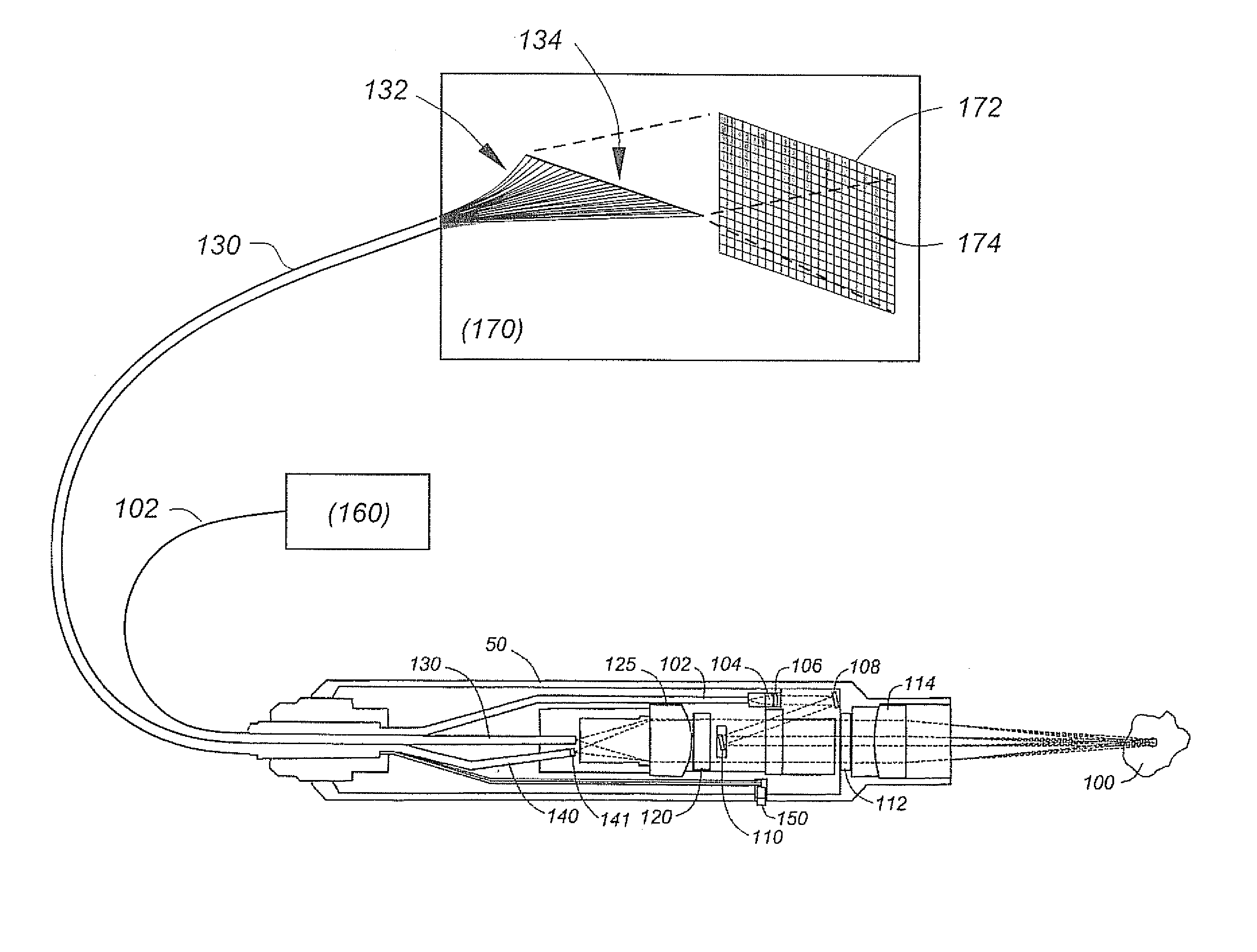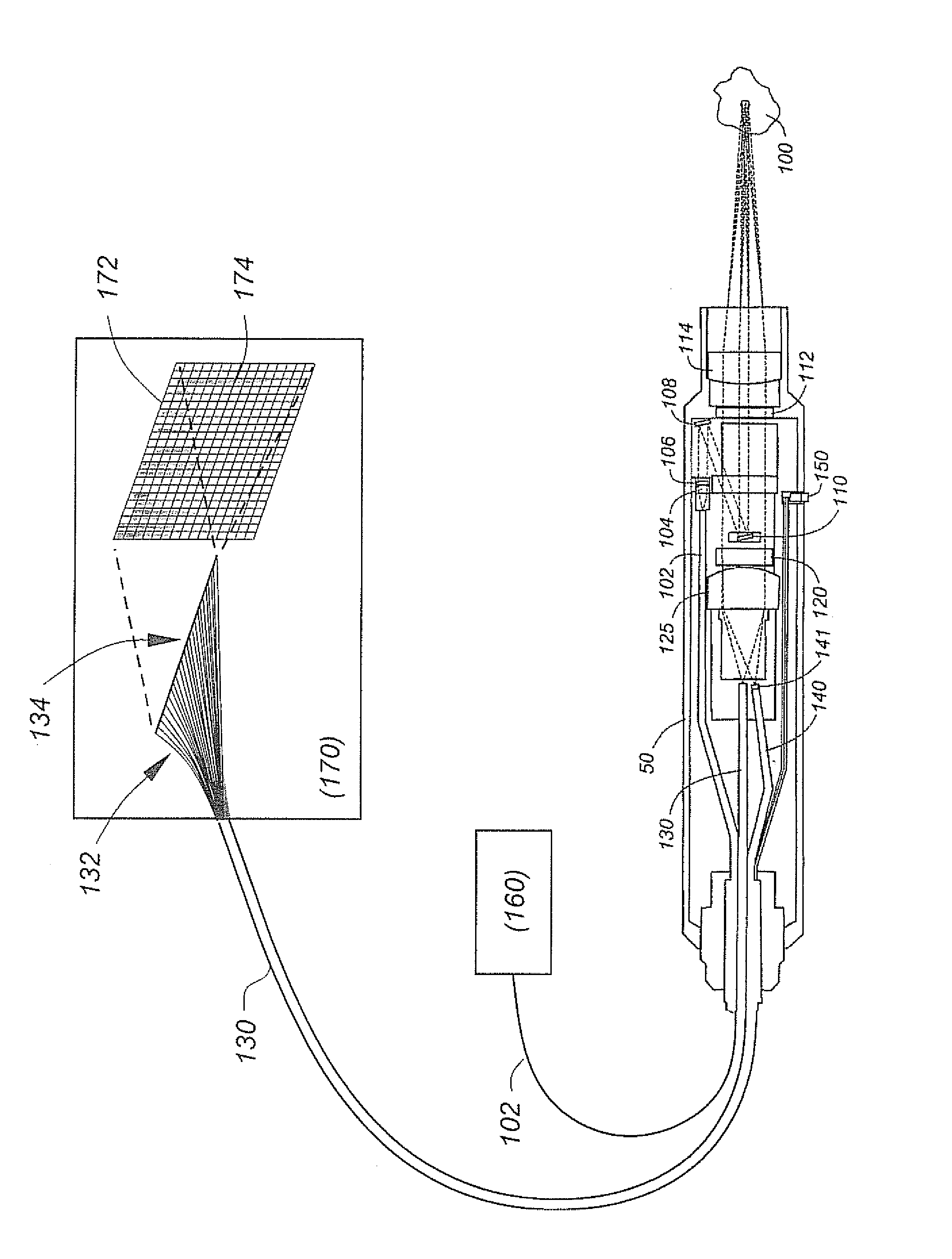Large-collection-area raman probe with reduced background fluorescence
a raman probe and large spot size technology, applied in the field of optical measurement probes, can solve the problems of poor signal efficiency, large intensity of small spot limit applications, and existing probes in their relatively small spot size, and achieve the effect of improving signal efficiency
- Summary
- Abstract
- Description
- Claims
- Application Information
AI Technical Summary
Benefits of technology
Problems solved by technology
Method used
Image
Examples
Embodiment Construction
[0016]Making reference to FIG. 1, a system constructed in accordance with this invention includes a laser source 160, spectrograph 170, and a remote optical measurement probe which may include various optical elements within housing 50 described in further detail below. Light from the laser 160 is delivered to the probe through excitation fiber(s) 102, and collected light for the sample is delivered to spectrograph 170 through collection fiber(s) 130.
[0017]Excitation light generated by laser source 160 produces a nominal wavelength in the near-infrared (NIR) region of the spectrum (i.e., in the 850 nm-1200 nm range). For example, due to the commercial availability of laser diode sources, a nominal laser wavelength of 993 nm may be used.
[0018]Although single and multiple fibers may be used for either the excitation or collection paths, in the preferred embodiment a single excitation fiber is used in conjunction with a bundle of collection fibers (typically 50, more or less). The diam...
PUM
 Login to View More
Login to View More Abstract
Description
Claims
Application Information
 Login to View More
Login to View More - R&D
- Intellectual Property
- Life Sciences
- Materials
- Tech Scout
- Unparalleled Data Quality
- Higher Quality Content
- 60% Fewer Hallucinations
Browse by: Latest US Patents, China's latest patents, Technical Efficacy Thesaurus, Application Domain, Technology Topic, Popular Technical Reports.
© 2025 PatSnap. All rights reserved.Legal|Privacy policy|Modern Slavery Act Transparency Statement|Sitemap|About US| Contact US: help@patsnap.com


